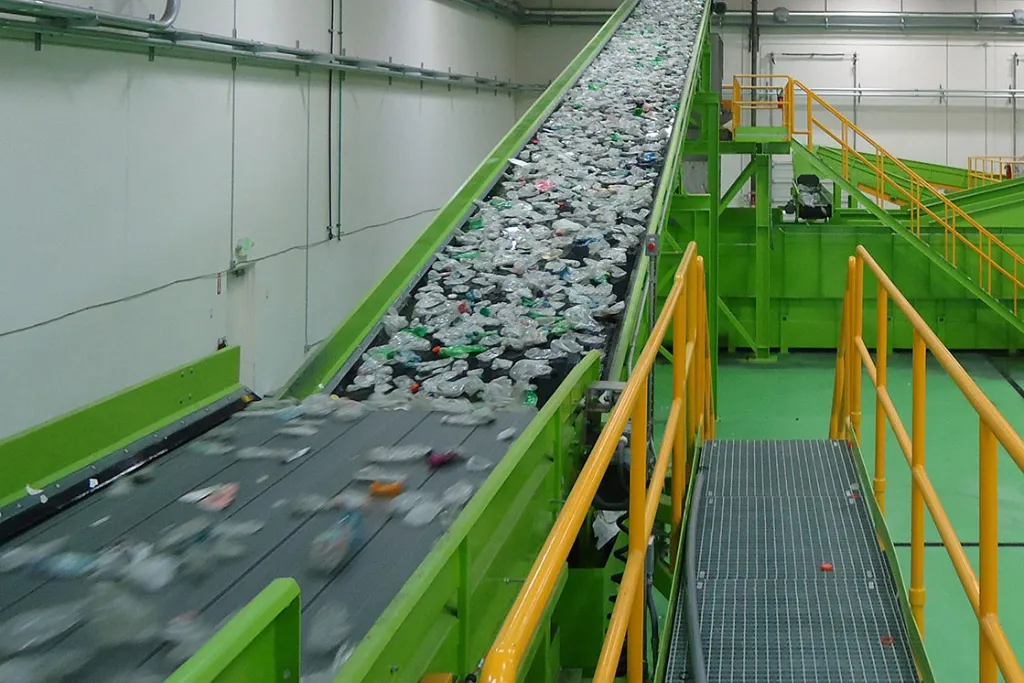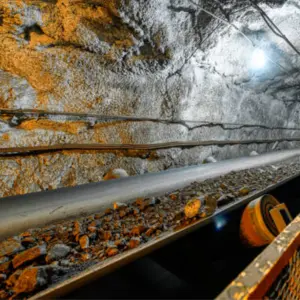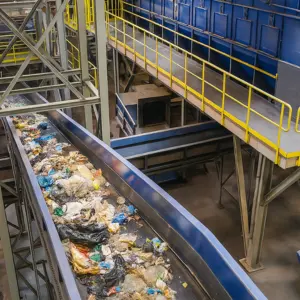Conveyors in Demolition and Debris Removal
In the dynamic realm of demolition and debris removal, where efficiency, safety, and precision are paramount, demolition conveyors play a crucial role in enhancing cleanup processes and optimizing construction site operations. These specialized transport systems facilitate the swift movement of debris, rubble, and waste materials, ensuring efficient transfer from demolition sites to designated removal areas. By automating debris transportation, conveyors not only boost productivity but also significantly reduce physical labor demands, contributing to a safer and more effective workplace. This comprehensive guide explores the importance of conveyors in demolition and debris removal, detailing their types, applications, key components, benefits, and the challenges faced when operating without them.

The Importance of Conveyors in Demolition and Debris Removal
Conveyors are indispensable in demolition and debris removal projects, enabling the rapid and efficient movement of materials such as rubble, construction debris, and waste. Strategically positioned, these systems transport debris from demolition sites to areas designated for processing, recycling, or removal. By automating material handling, conveyors minimize the need for manual labor, heavy machinery, and excessive trucking, thereby streamlining cleanup tasks and fostering a safer work environment.
Types of Conveyors Used in Demolition and Debris Removal
Belt Conveyors
Belt conveyors are widely utilized for transporting materials horizontally or at an incline over varying distances. Comprising a continuous loop of transport belts, they are suitable for both short and long distances in demolition projects. Their versatility allows for seamless integration into various site layouts, ensuring smooth operations regardless of project size.
Sorting Conveyors
Sorting conveyors are engineered to separate different types of debris, thereby enhancing recycling efforts by directing materials to their respective processing or removal areas. This capability promotes sustainable waste management practices and increases the efficiency of recycling operations, ensuring that valuable materials are not lost to landfills.
Transfer Conveyors
Transfer conveyors facilitate the seamless transition of debris from demolition sites to trucks, containers, or other conveyors, optimizing material flow and minimizing disruptions in the debris removal process. Their ability to connect different stages of debris handling is vital for maintaining operational efficiency.
Radial Stacking Conveyors
Radial stacking conveyors are versatile systems that can extend radially to create organized stockpiles of debris. They are particularly useful for efficient material storage or loading onto trucks for removal, allowing for better site organization and management.
Advantages of Using Conveyors in Demolition and Debris Removal
Environmental Sustainability
Sorting conveyors play a vital role in effective recycling efforts, diverting recyclable materials from landfills and supporting eco-friendly debris removal practices. According to the Environmental Protection Agency (EPA), effective recycling can significantly reduce the environmental impact of construction projects, making conveyors an essential component of sustainable operations.
Improved Site Safety
Conveyors enhance workplace safety by decreasing the need for manual handling and heavy equipment movement, thereby reducing the risk of on-site accidents and injuries. This focus on safety not only protects workers but also enhances overall project efficiency.
Reduced Equipment Usage
By minimizing the need for heavy machinery, conveyors lower fuel consumption, equipment wear, and overall operational costs. This makes them a cost-effective solution for debris removal, contributing to better budget management for demolition projects.
Environmental Sustainability
Sorting conveyors play a vital role in effective recycling efforts, diverting recyclable materials from landfills and supporting eco-friendly debris removal practices. According to the Environmental Protection Agency (EPA), effective recycling can significantly reduce the environmental impact of construction projects, making conveyors an essential component of sustainable operations.
Key Components of Demolition and Debris Removal Conveyors
Conveyor Belt: The conveyor belt is crucial for efficiently transporting debris along the conveyor path, ensuring smooth and reliable operation.
Rollers and Idlers: These support structures reduce friction and ensure smooth movement of the conveyor belt, preventing material jams and enhancing transport performance.
Drive System: The electric motor, gearbox, and associated components power the conveyor, controlling its speed and direction for optimal material transport.
Sorting Mechanisms: Sorting conveyors may include features such as chutes, diverters, or sensors to guide various types of debris to their designated destinations, improving sorting accuracy and efficiency.
Applications of Conveyors in Demolition and Debris Removal

Safe Material Handling
Conveyors enhance worker safety by minimizing the need for manual lifting, thereby reducing the risk of injuries associated with heavy lifting and debris handling. A safer work environment leads to improved morale and productivity among workers.

Streamlined Loading and Unloading
Transfer conveyors enable efficient loading and unloading of debris onto trucks, containers, or processing facilities, streamlining the removal cycle and reducing loading times. This efficiency is crucial for meeting project deadlines and maintaining productivity.

Recycling Initiatives
Sorting conveyors assist in separating recyclable materials from general debris, facilitating recycling processes and contributing to sustainable waste management practices. This not only supports environmental goals but also enhances the overall efficiency of demolition projects.

Efficient Debris Transport
Conveyors effectively transport debris from demolition sites to designated areas for recycling, processing, or removal, reducing the need for manual labor and minimizing site congestion. This streamlined process is essential for maintaining workflow on busy job sites.
Challenges of Demolition and Debris Removal Without Conveyors
Increased Labor Intensity
Without conveyors, manual handling of debris can lead to higher labor demands, longer cleanup times, and potential worker fatigue. This can ultimately impact project timelines and budgets.
Site Congestion
Excessive movement of heavy machinery for debris removal can obstruct the work site, hindering operational efficiency and posing safety risks. This congestion can slow down progress and increase the likelihood of accidents.
Limited Sorting Efficiency
The absence of sorting conveyors can impede effective recycling efforts, resulting in inefficient waste management and missed recycling opportunities. This not only affects environmental goals but also increases disposal costs.
Safety Risks
Manual lifting and handling of heavy debris can pose safety hazards to workers, increasing the likelihood of injuries and accidents. Ensuring a safe work environment is essential for the success of any demolition project.
Why Choose EKA Conveyors?
With over 15 years of experience in the industry, EKA Conveyors has partnered with numerous demolition contractors to enhance their operational efficiency. For instance, a leading demolition firm we collaborated with reported a remarkable 30% reduction in cleanup times after integrating our conveyor systems into their workflow. Furthermore, they achieved a 40% increase in recycling rates by utilizing our advanced sorting conveyor technology, significantly reducing landfill waste and bolstering their sustainability efforts. Our hands-on experience in the field allows us to tailor solutions that meet the unique challenges of each project.

